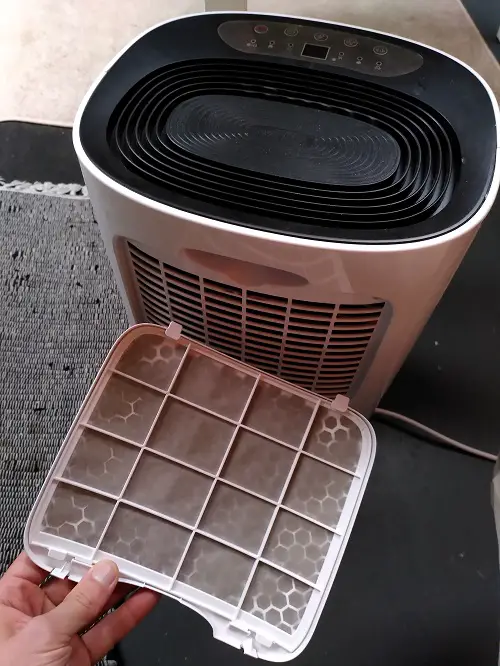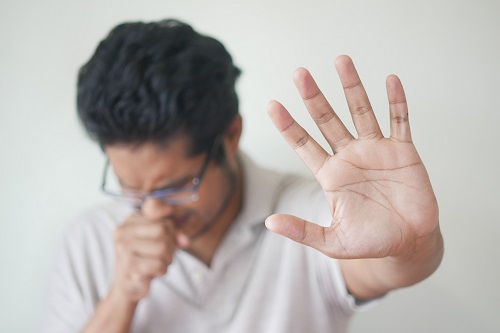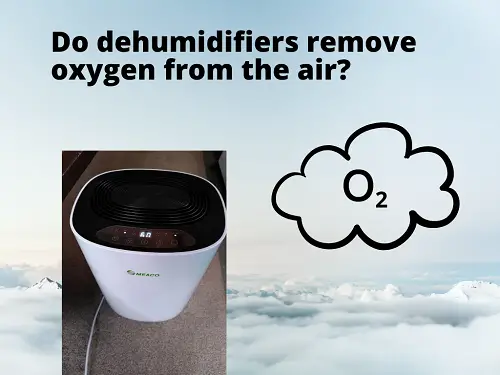Dehumidifiers do not remove oxygen from the air. They do not use oxygen to burn fuel because they run on electricity. Therefore, no air-polluting exhaust gases are produced either. The air going through a dehumidifiers is filtered of dust and other partiles, and water vapor is removed. The oxygen content of the air remains the same.

A dehumidifier is an electrical appliance that does not burn any fuel. To burn fuel, oxygen is used. A dehumidifier does not do this. There is nothing a dehumidifier does that can remove oxygen from the air. Therefore, the oxygen content of the air should remain the same when running a dehumidifier.
However, dehumidifiers do affect the quality of the air. Therefore, the air can feel less fresh in certain situations, making you wonder whether the air has enough oxygen.

Why the air can feel less fresh when using a dehumidifier
A dehumidifier is designed to improve the quality of the air. It does this by removing water vapor to reduce the level of humidity. Additionally, its filter removes airborne particles such as dust, pollen and mold spores. This should improve indoor air quality and make the air feel and breathe better. However, the air can feel less fresh when using a dehumidifier. This can happen when:
- The device has just been turned on
- The humidity of the air has become too low
- The room has not been ventilated enough
- Using the wrong type of dehumidifier

The device has just been turned on
When you turn on a dehumidifier, air quality can worsen initially. Dust sitting on the floor, your furniture or the dehumidifier itself, can become airborne again when running the dehumidifier. Because the device’s fan causes air movement, settled-down dust will be blown up into the air. This leads to a sudden increase of airborne dust, and therefore less healthy air.
Especially for people with allergies, sensitivities, or a lung condition, a sudden increase in airborne particles can have a significant effect on their ability to breathe.
However, the dehumidifier itself includes a filter that cleans the air of dust. Therefore, after running for a while, the air will have been cleaned of dust. How long the device needs to run before cleaning the air of dust depends on the air changed per hour of the device. The air changes per hour (ACH) tells you how long it takes to run all the air in the room through the device. For example, if a device is fit for the size of the room and has an ACH of 1, it takes 1 hour to filter all the air. An ACH of 4 takes 4 times less, or 15 minutes. The ACH should be mentioned in the manual.
You can prevent the initial increase of airborne dust by cleaning the house before turning on the device.
The humidity of the air has become too low
When you run your dehumidifier constantly, the relative humidity of the air becomes lower and lower. Some dehumidifiers come with a humidistat. A feature that lets you set the desired humidity level. This will make the device stop running when the air reached that level. It will also turn it back on when humidiity levels have increased again.
However, without a humidistat, you run the risk of making the air too dry. Air that has become too dry can feel very uncomfortable and can make breathing unpleasant.
Dry air can lead to:
- dry skin
- dry eyes
- a sore throat
- feeling thirsty

The room has not been ventilated enough
To run a dehumidifier effectively, ventilation has to be kept at a minimum. Otherwise, fresh air will constantly enter the room, and undo some of the dehumidifier’s work. The incoming air will have a higher moisture content than the dehumidified air in the room, and the humidity will not be reduced despite running the dehumidifier.
Therefore, windows and doors should be closed when running a dehumidifier. This can, however, lead to air quality problems. Although a dehumidifier helps with certain aspects of air quality, it does not help against every potential problem. Good ventilation does.
Dehumidifiers help with airborne particles and humidity levels. However, gases are not affected. Therefore, it is possible your air quality actually reduces when running a dehumidifier. This will be the case when you have one or more gases that are harmful, and require ventilation to be controlled. When you close all ventilation to run the dehumidifier, air quality could get worse.
Using the wrong type of dehumidifier
There are two types of dehumidifiers that are fit for different situations. The most common type of household dehumidifier is the compressor-type. This type of dehumidifiers work best at high levels of humidity and high room temperature. 60 degrees F (15 C) and higher, and 60% relative humidity and higher.
When a desiccant dehumidifier is run at temperatures below 60 degrees F (15 C), the internal components can start freezing. Modern compressor dehumidifiers have an anito-freezing mode that turns on when this happens. However, this mode shuts down the dehumidification process and leads to the release of very cold air.
When this feature runs, the air coming out of the dehumidifier does not have lower humidity and feels very cold. This can feel very uncomfortable and might be why you are wondering whether the device affects oxygen levels.
The other type of dehumidifier is called a desiccant. This type of dehumidifier runs well regardless of the temperature. It is best fit for when a compressor dehumidifier does not work as well (such as low temperatures).
A desiccant dehumidifier contains a heater that warms the air going through the device. Therefore, relatively hot air of about 50 F (10 C) more than the surrounding air is released. This hot air can feel very uncomfortable, especially when the air is already warm.
For more in-depth information about how these types of dehumidifiers work, I recommend reading my article:

